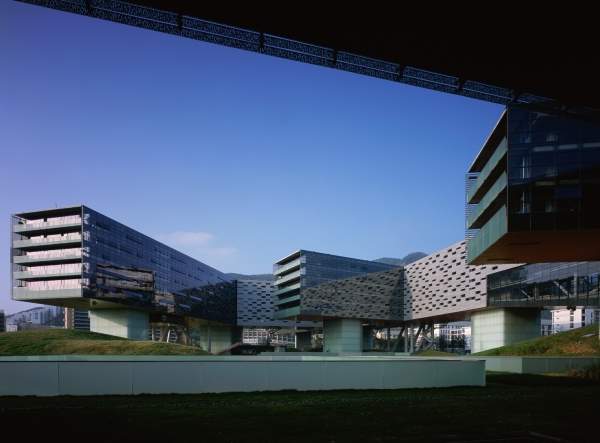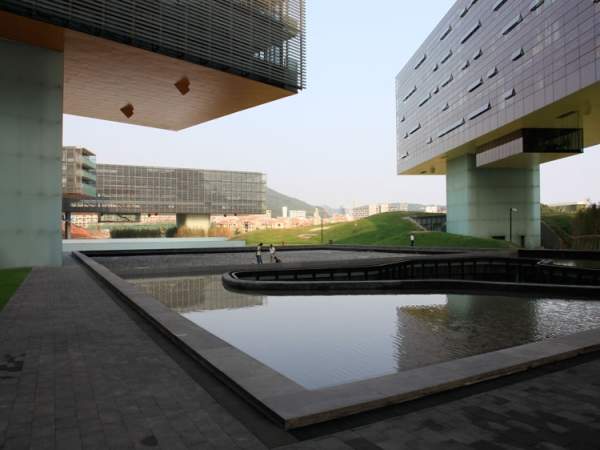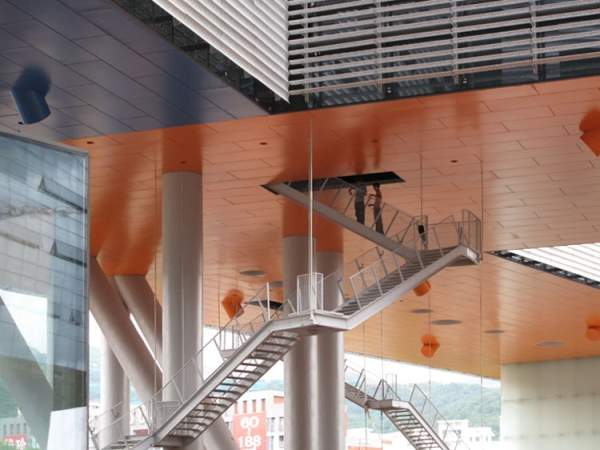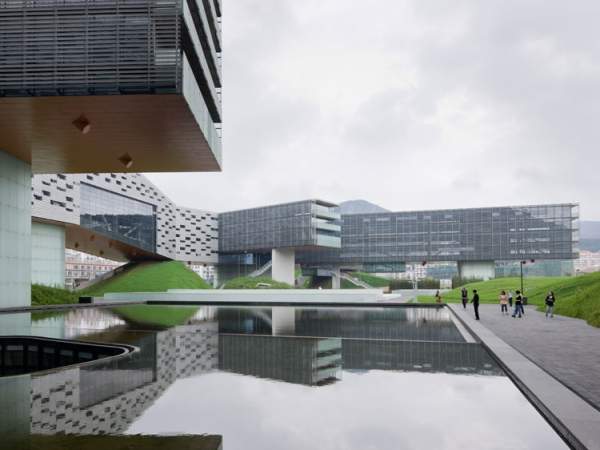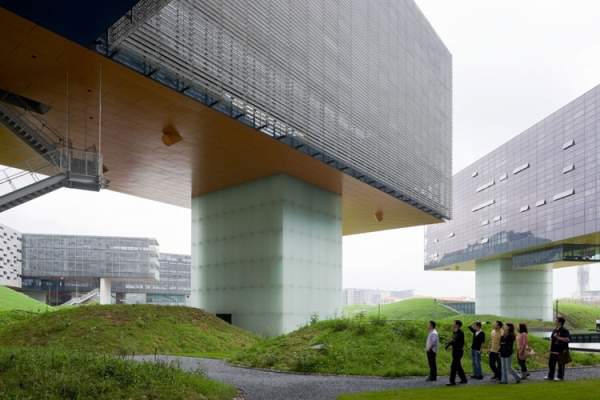Vanke Center Shenzhen is a horizontal skyscraper located in Mirs Bay in Dameisha, Shenzhen, China. It is one of the most sustainable mixed-use buildings in the world, achieving LEED Platinum certification in October 2011.
The horizontal skyscraper was designed by Steven Holl Architects in association with CCDI Architects. The architects were selected through a competition over Netherlands-based MVRDV and China-based HAE. Shenzhen Vanke Real Estate is the owner and developer of the complex.
Construction of the complex was started in April 2007 and completed in 2009. Total area of the building is more than 1.29 million square feet.
The building achieved several international awards, such as the American Institute of Architects’ (AIA) Honor Award, the American Institute of Architects New York Chapter award, Green Good Design Award, BCI Green Design Award and the 2011 American Architecture Awards.
Design of the Vanke Center Shenzhen
The Vanke Center Shenzhen hovers about 50ft above the ground over a lush tropical landscape. The floating structure allowed provision of the largest possible green public space below the building.
The design provides unobstructed views of the surrounding mountain ranges in the north and the South China Sea. It also allows free flow of land and sea breezes to all the individual elements of the building and the public gardens.
The structure underneath the surface is finished with bright colours. The sunken glass cubes (called Shenzhen windows) located below the floating structure offer panoramic views of the green landscape at the ground level.
The maximum height of buildings at the site was limited to 115ft (35m), necessitating innovative design solutions. If the horizontal structure is held up straight, it would be slightly taller than the Empire State Building in New York (1,454ft).
Structure of the horizontal skyscraper
The main building consists of four or five storey individual buildings lifted at about 50ft above the ground. These branches sprawl out in one direction. The entire structure rests on eight cores to have a minimal footprint on the tropical gardens. Each core is about 164ft apart. A public sideway, supported by the cores, connects the apartment zones, offices and the hotel.
Construction of the floating structure required several new construction techniques and technologies such as hybrid construction technology. The structure combines both column-and-beam concrete systems and cable-stay bridge building technology. This eliminated the need for trusses, allowing large spans and unobstructed façade views.
The flexible steel membranes are enclosed in steel tubes to minimise the vibration effects and carry a load of 3,280t. The landscape under the building and the elevated sideways turns the entire site into a public park.
The site is a designated storm water management system for Shenzhen. It stores water and acts as a bio-swale for the nearby water creeks. A retaining wall was built at the waterfront to reduce the run-off and erosion.
Landscaping
The 559,723ft2 of landscaping area consists of planted mounds, sunken gardens, courtyards and ponds to create a storm water circulatory system throughout the site. It also has semi-permeable materials such as gravel, local river stones, grass-crete, open-joint stone and sand pavers for absorbing and naturally filtering storm water. The water is used for irrigation.
The landscape design was inspired from the Roberto Burle Marx’ gardens in Brazil.
Façade of the sustainable mixed-use building
The façade of the building is designed with perforated aluminium, porous louvres and double low-e coating glass. It protects the building against impact of sun heat and wind. The building has 26 faces with each having its own elevation, which allowed determination of the fixed and operable louvres for maximum views and daylight penetration.
Facilities at Shenzhen’s award-winning Vanke Center
The horizontal skyscraper includes the headquarters of China Vanke Properties and offices, SOHO apartments, corporate offices, a hotel and public parks.
The planted mounds of the public landscape comprise a spa with pools, a 400-seat conference centre, cafés, restaurants and parking areas.
The building incorporates several sustainable features such as 15,000ft2 photovoltaic panels installed over the rooftop, a greywater recycling system, rain water harvesting, computer-and-sensor-controlled system, automatically operable louvres and use of sustainable materials such as bamboo for floors, doors and furniture.
Low flow and efficient water fixtures, recycling of storm water for irrigation and native plantations for the green roof are some of the sustainable water management features.
Contractors involved in the Chinese Vanke Center
General contractor of the project was China State Construction Engineering Corporation (CSCEC). Transsolar Engergietecknik was the climate engineering consultant.
CABR was the structural engineer and China Construction Design International (CCDI) was the mechanical engineer. Arup was the sustainability consultant. L’Obseratoire International Lighting Designers and Consultants was the lighting consultant and Yuanda Aluminium Industry Engineering was the façade consultant.

